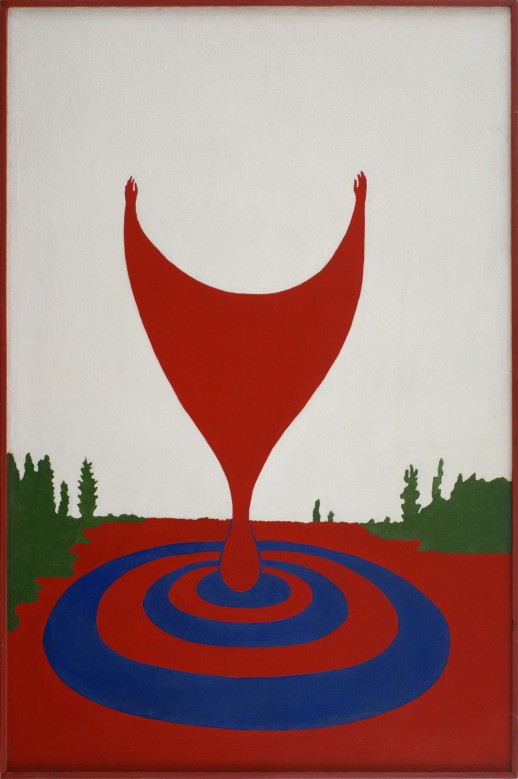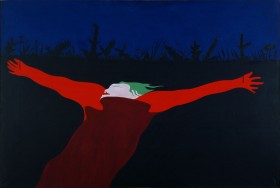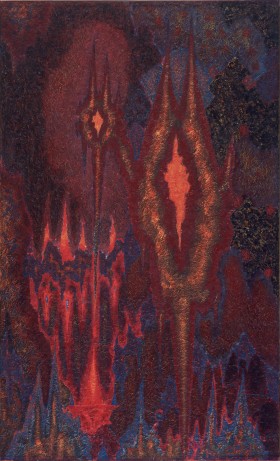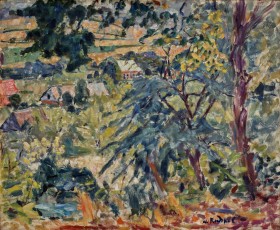A Drop in the Sea
- type of object: painting
- date: 1976
- material/technique: oil on canvas
- dimensions: 120 x 78,5 cm
- inventory No.: M-489
- image licensed under: CC BY-NC-ND 3.0
Jerzy Ryszard ‘Jurry’ Zieliński rejected textural solutions stemming from post-impressionism and dominant at the Warsaw Academy of Fine Arts while still studying with Jan Cybis. Art critic Wojciech Krauze wrote that Zieliński and Jan ‘Dobson’ Dobkowski — founders of the Neo-Neo-Neo group in 1967 — ‘painted against their own professor, but also against the ossification of the Academy, against the whole world’. The rejection of artist names and all the existing trends in art — the so-called ‘isms’ — was the result of a countercultural worldview. In the meantime, the hippie movement was flourishing in America, and both artists drew from in a belief in friendship and peace among people, the feeling of absolute freedom, and a provocative but also joyful attitude towards their surroundings.
Zieliński treated space in his paintings conventionally, at times eliminating it completely. He filled the surface of the canvas with large flat fields of smoothly applied intense colour, reminiscent of poster aesthetics. He reduced the depicted objects to simple artistic signs, which were formally clear, but ambiguous in terms of the content they carried. Metaphorically, they conveyed reflections on the condition of contemporary humanity.
In the painting A Drop in the Sea, the forms were painted in a schematic and unrealistic way. The two upper ends of the enigmatic shape visible in the centre of the canvas are terminated by small hands in a gesture associated with adoration. At the bottom, the shape tapers into a droplet that strikes the surface of water, creating dynamic circles. The drop symbolises the energy that suffuses all of nature, speaking to the existence of immaterial vital forces that transcend physical and chemical descriptions. This belief, called vitalism, is associated with the beginning of ecological reflection in the hippie generation, with an attitude of a critical approach to technical civilization, and concern for the state of the environment. As Zieliński claimed, ‘I am one part of the human set. And this obliges me to be responsible for this world, from the first pain to the painful end’.
Ewa Skolimowska, translated by Paulina Bożek








